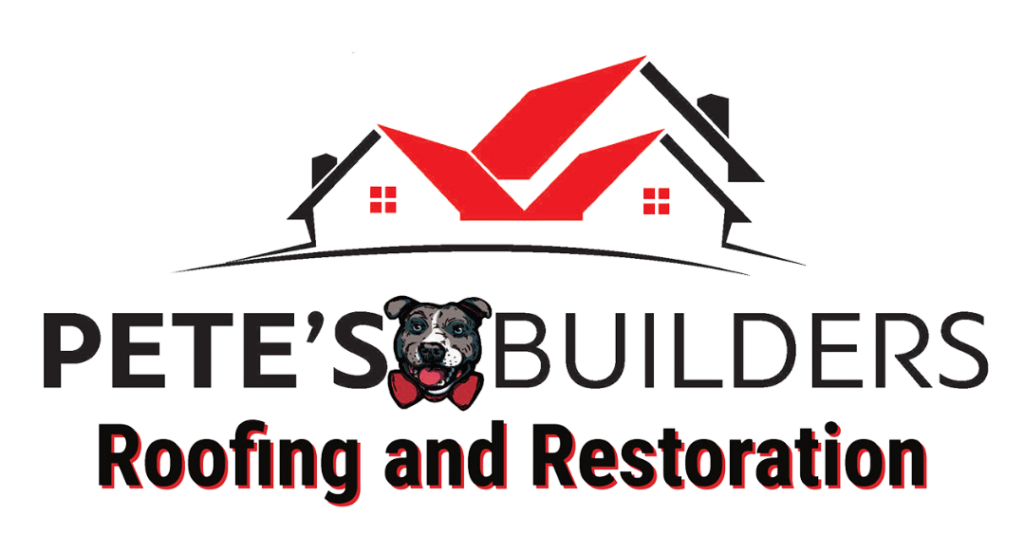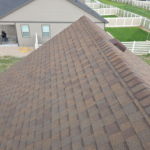How to Care for a New Roof After Installation in Nebraska (Expert Guide)
A brand-new roof in Nebraska is an investment that should last decades—but only if it’s properly maintained. Whether you’re in Lincoln, Omaha, Kearney, or Grand Island, caring for your new roof after installation is critical to preserving its structure, warranty, and performance across all four seasons.
At Pete’s Builders, we’ve installed and maintained residential and commercial roofs throughout Nebraska for over a decade. This expert guide gives you the exact steps to protect your new roof from the state’s intense sun, spring storms, heavy rain, and winter freeze.
🔹 Why “New” Doesn’t Mean “Maintenance-Free”
Your new roof may look flawless—but it’s already being tested the moment it’s exposed to Nebraska’s unpredictable weather.
-
Spring brings hail, tornadoes, and wind gusts over 60 mph
-
Summer delivers 90–100°F heat and intense UV radiation
-
Fall introduces debris buildup and leaf-clogged gutters
-
Winter brings snow loads, freeze-thaw cycles, and ice dams
New roofing materials still need time to “settle” into these climate rhythms. Early maintenance helps prevent minor issues (like loose flashing or moisture pockets) from turning into leaks and costly repairs.
🔹 First 30 Days After Roof Installation: Your Maintenance Checklist
Week 1–2:
-
Avoid walking on the roof. Foot traffic can scuff or loosen new shingles.
-
Check for leftover installation debris in gutters and downspouts.
Week 3–4:
-
Inspect flashing from the ground using binoculars.
-
Go into your attic early in the morning to check for moisture, mold, or dripping nail tips.
📸 Take pictures. Having a roof log helps maintain your warranty and supports insurance claims.
🔹 Seasonal New Roof After Installation for Nebraska Homes
| Season | Task | Local Trigger | Why It Matters |
|---|---|---|---|
| Spring | Remove moss & clear roof valleys | After March rain/hail storms | Prevents algae, improves drainage |
| Summer | Seal exposed nails & inspect vents | UV index > 7, heat above 90°F | Prevents sealant failure |
| Fall | Clean gutters & roof edges | First week of falling leaves | Avoids overflow and ice dams |
| Winter | Remove snow buildup at 6”+ | Wet snow or ice accumulation | Prevents structural sagging |
🔹 Nebraska’s Top Roof Threats
-
Hail & Wind: Especially in April–June; loosen shingles and damage flashing.
-
Debris: Cottonwood seeds, maple leaves, and pine needles clog drains and valleys.
-
UV Exposure: High summer heat dries out caulking and cracks asphalt.
-
Snow Loads: Even modest snow can create dangerous weight buildup in Omaha and central Nebraska.
🔹 Recommended Roof Care Tools
-
✅ Soft-wash sprayer (under 60 psi) to rinse roof surfaces
-
✅ Plastic gutter scoop to avoid granule loss
-
✅ Infrared thermometer or thermal camera for spotting hot/cold roof leaks
-
✅ Moisture meter for checking attic drywall after storms
🔹 Roofing Code & Warranty Tips for Nebraska Homeowners
Under IRC (International Residential Code) and manufacturer warranties (like GAF or Owens Corning), you may be required to:
-
Maintain overhangs and starter strips
-
Avoid using pressure washers
-
Document inspections and repairs bi-annually
💡 Pro Tip: Don’t modify roof edges, nail patterns, or vent placements post-install. This can void your warranty.
🔹 DIY vs. Pro Roof Maintenance: What’s Safe?
| Task | DIY-Safe | Call Pete’s Builders |
|---|---|---|
| Gutter cleaning | ✅ Yes | |
| Moss brushing (gentle) | ✅ Yes | |
| Resealing chimney flashing | ❌ | ✅ Yes |
| Snow removal above 6” | ❌ | ✅ Yes |
| Drone roof inspections | ✅ Yes | Or ask us for scans |
🔹 Real Costs of Neglect (Nebraska Averages)
| Issue | Repair Cost | Prevented By |
|---|---|---|
| Moss + shingle replacement | $1,250 | $40 copper/zinc strips |
| Overflow damage to soffits | $2,000 | $120 gutter clean-up |
| Ridge cap blow-off replacement | $750 | Yearly roof tune-up ($250) |
🔹 Smart Roof Monitoring Tools
Install affordable battery-operated leak detectors near skylights and plumbing stacks in your attic. These ping your phone if moisture levels rise above 1%—giving you a head start before any ceiling stain or drywall damage occurs.
🔹 Nebraska-Specific Roof Care Tips
-
Lincoln/Omaha spring winds reach 50–65 mph—check ridge caps after storms
-
Late May brings cottonwood fluff—clean it out of valleys before June rains
-
Freeze-thaw starts early in central Nebraska—monitor ice dam risk before January
-
Western Nebraska’s semi-arid zones need extra attention to UV sealant wear
🔹 Ventilation & Insulation Tips
-
Aim for 1:120 ventilation ratio (above standard 1:150) to prevent heat buildup
-
Use R-60 attic insulation to maintain temperature balance
-
Proper venting prevents condensation, mold, and ice dams
🔹 Roof Algae & Moss Removal in Nebraska
Humidity varies by region, but shaded roof sections in Nebraska still collect moss and algae over time.
Removal protocol:
-
Mist with a 1:5 bleach solution in the morning
-
Let it sit 15–20 minutes
-
Gently sweep downward with a soft broom
-
Rinse with a garden hose (no pressure washers)
-
Repeat annually in late spring or early fall
🔹 Winter Snow & Ice Dam Care
-
Use a poly snow rake to remove snow over 6”
-
Never chip ice with a shovel or pickaxe
-
Use calcium chloride melt socks, never salt (which corrodes flashing)
🔹 Tree Management Around Your Roof
Nebraska trees like oaks, maples, and cottonwoods can shed massive leaves and branches during storms. Keep branches at least 2 meters from the roof and hire certified arborists to manage large limbs.
Shaded roofs age 30% faster—especially on north-facing slopes.
🔹 Annual Roof Tune-Up: What Pete’s Builders Checks
-
Seal pipe boots with UV-resistant caulk
-
Tighten ridge cap nails
-
Replace any loose or blistered shingles
-
Re-align gutters to correct pitch (6mm drop per meter)
-
Drone scan for cracked flashing, exposed underlayment, or animal entry points
📁 We log all findings in a seasonal roofing checklist for Nebraska homes and businesses.
🔹 Skylight & Vent Stack Care
-
Acrylic skylights become brittle after 20+ years—replace before they crack
-
Plumbing vents should be checked every 10 years for gasket and seal integrity
-
Prevent attic frost and odor buildup with neoprene boot replacements
🔹 Insurance Tip: Save with Maintenance Logs
Major carriers in Nebraska (like Farm Bureau or State Farm) offer 5–8% premium discounts for documented roof care. Keep:
-
PDF inspection logs
-
Photo evidence of repairs
-
Invoices and contractor receipts
Store it all in a cloud folder for proof during claims.
🔹 Plan for Roof Replacement—Start Day One
Create a “Roof Log” with:
-
Dates of inspections
-
Photos and videos of problem areas
-
Notes on repairs or storm damage
-
Warranties and invoices
By year 20–25, you’ll have the records you need to budget, plan a replacement, or increase resale value.
✅ Final Thoughts: Roof Longevity Starts with Smart Habits
In Nebraska’s intense weather—sun, hail, snow, wind—a well-maintained roof is your home’s first line of defense. New roofing doesn’t mean no upkeep. It means early and consistent care using a seasonal rhythm: inspect, clean, document, repeat.
Need help? Contact Pete’s Builders for a yearly roof tune-up, professional inspection, or moss removal.
📞 Call us today: (531) 254-5881
📍 Serving: Lincoln, Omaha, Bellevue, Grand Island, Kearney, and nearby towns



